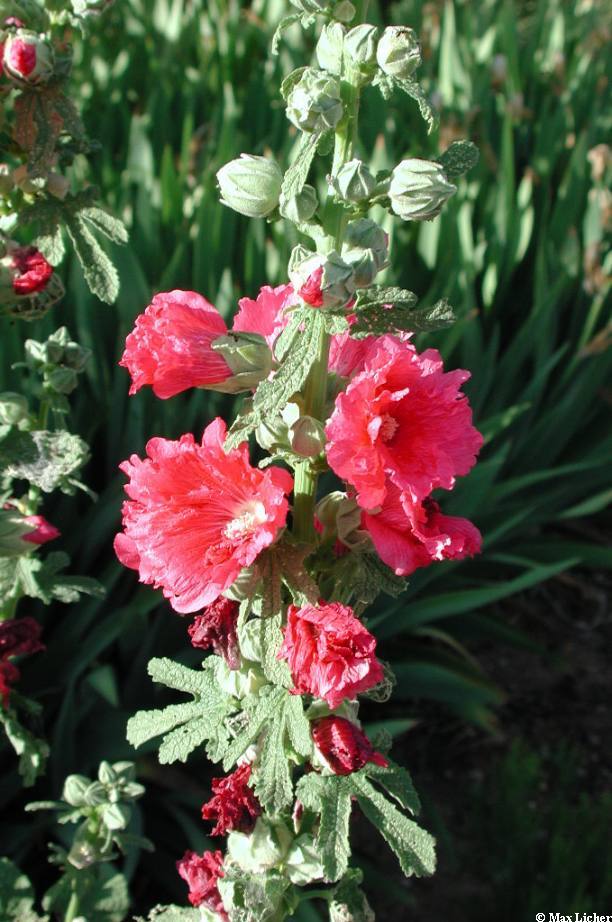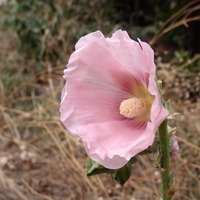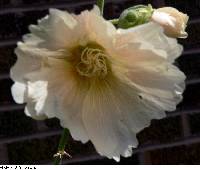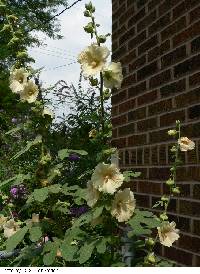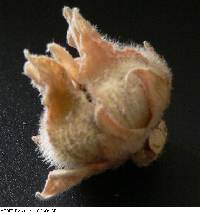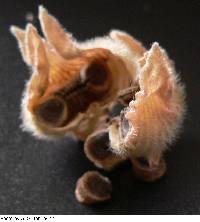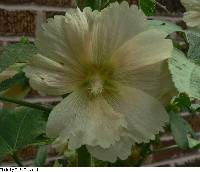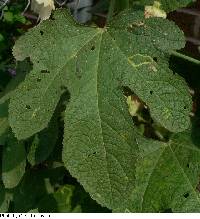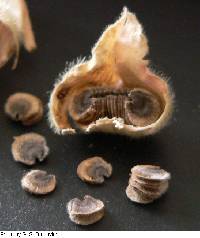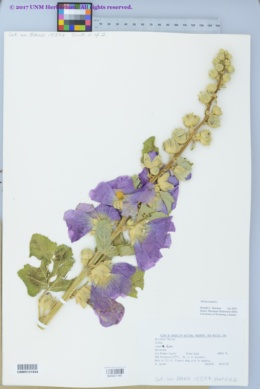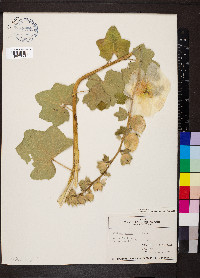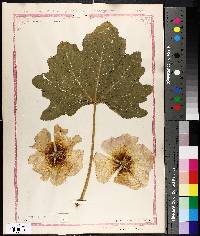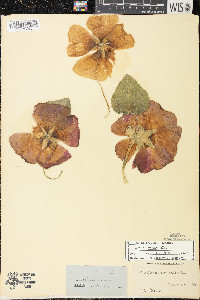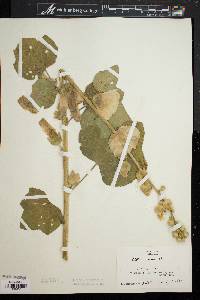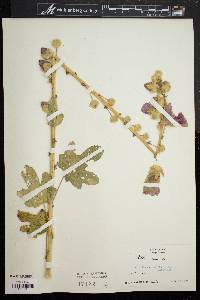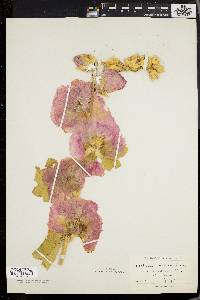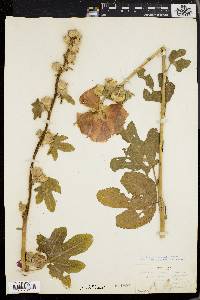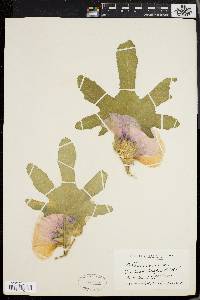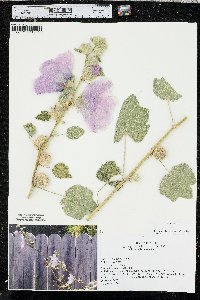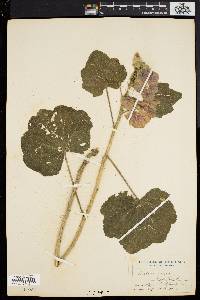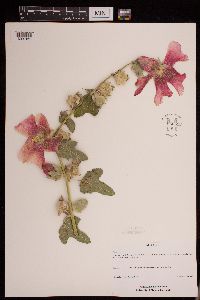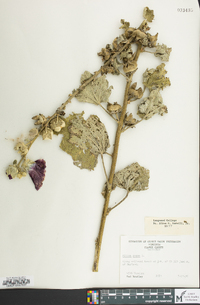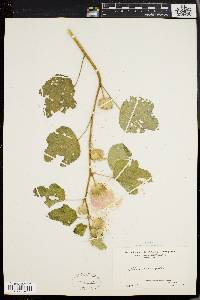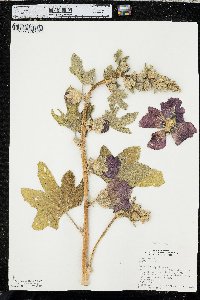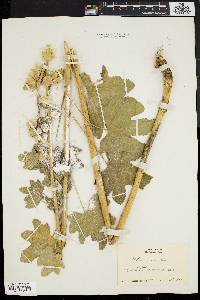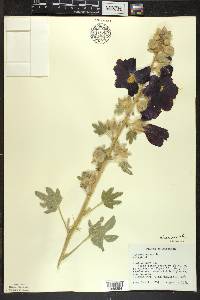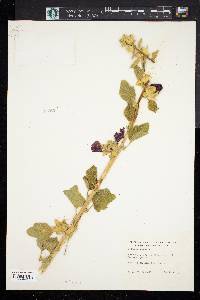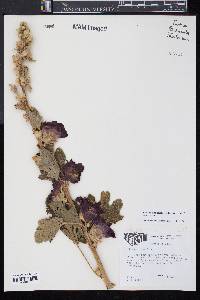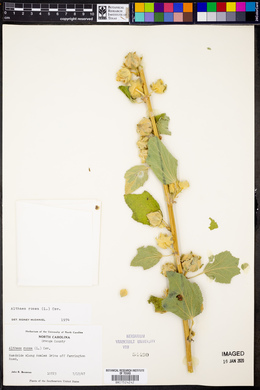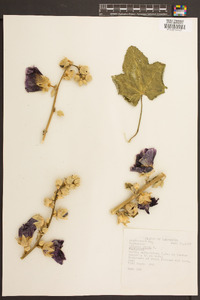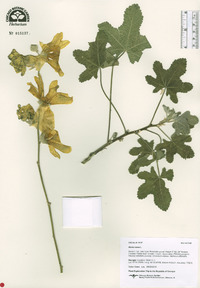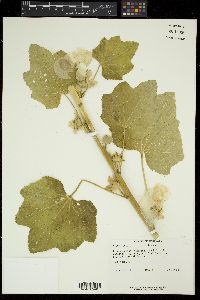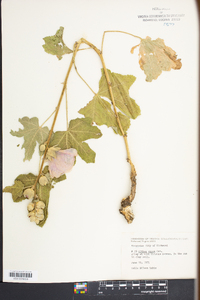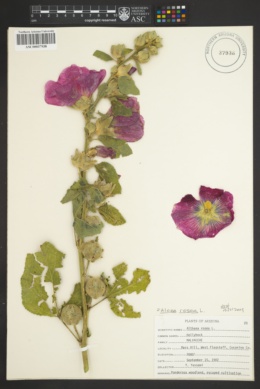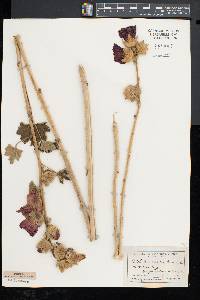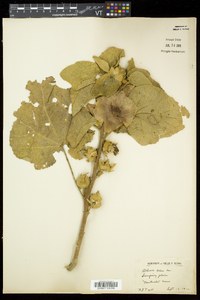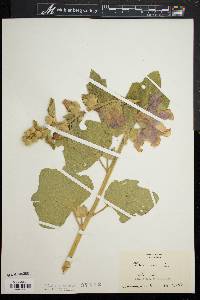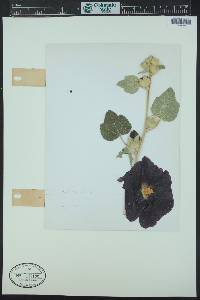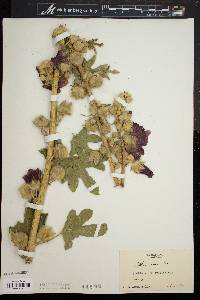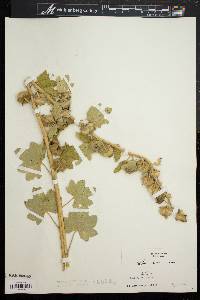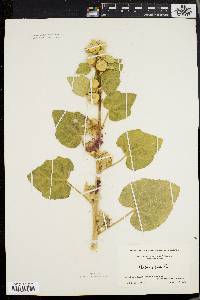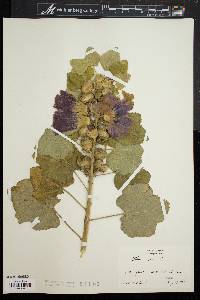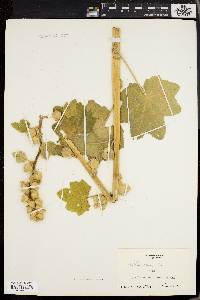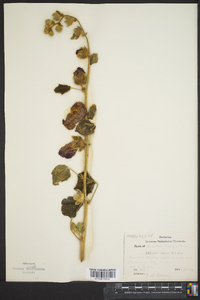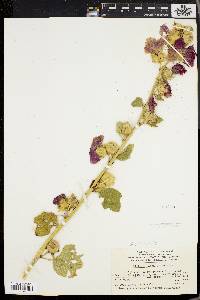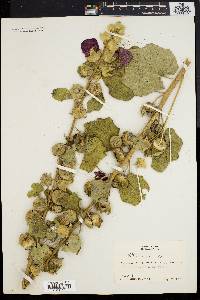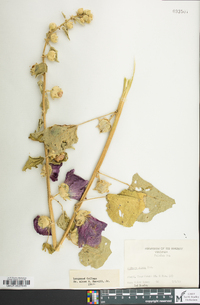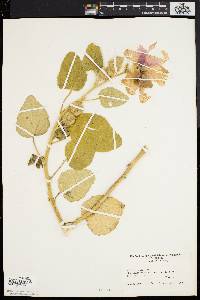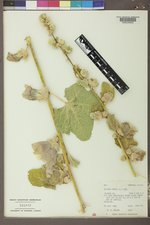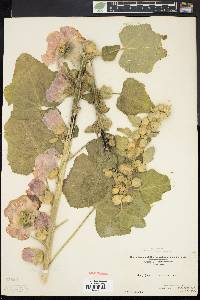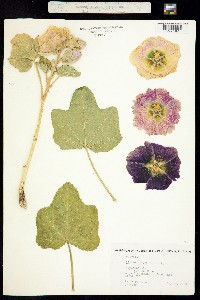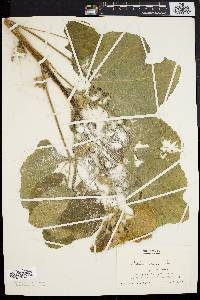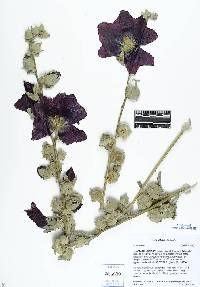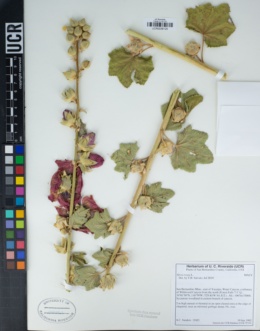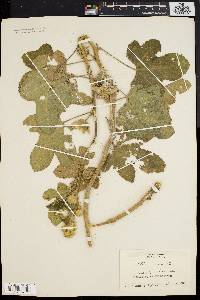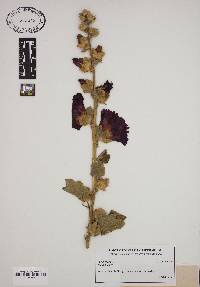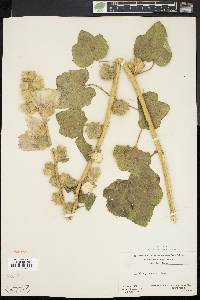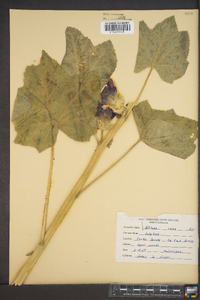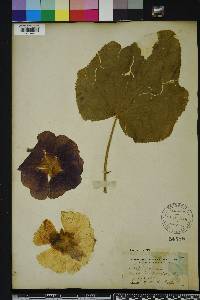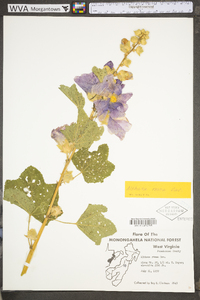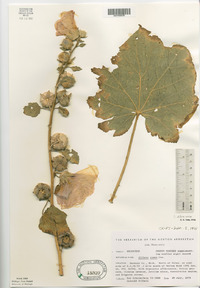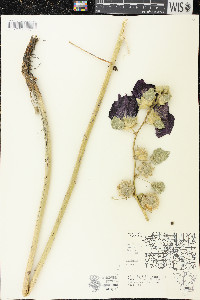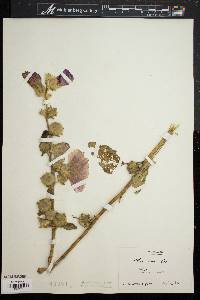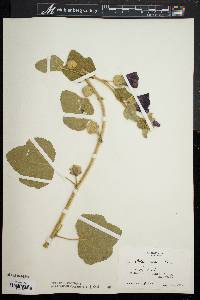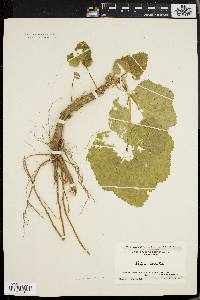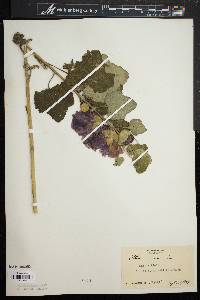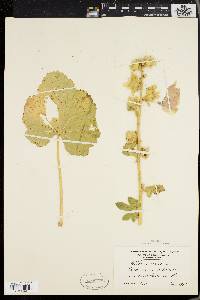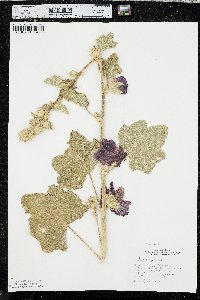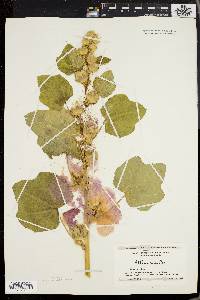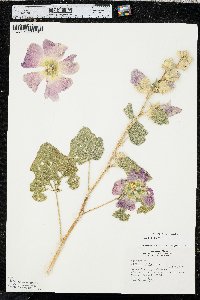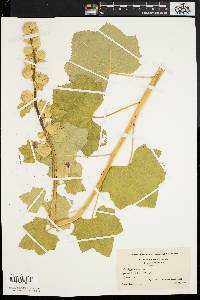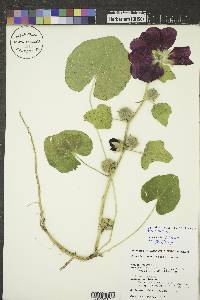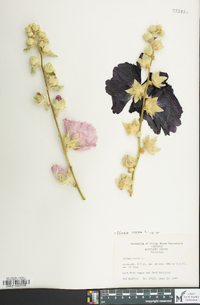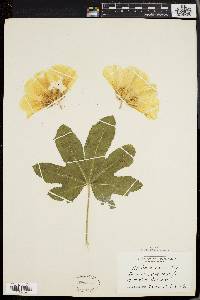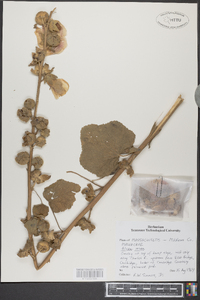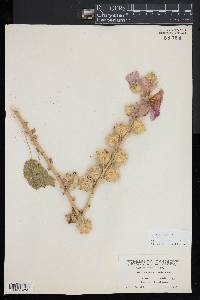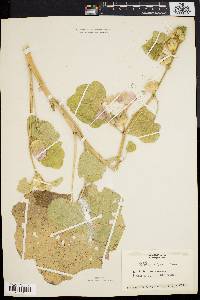Alcea rosea
|
|
|
|
Family: Malvaceae
Hollyhock
[Althaea ficifolia (L.) Cav., moreAlthaea rosea (L.) Cav.] |
Perennial herb 1.5 - 3 m tall Stem: erect, unbranched, stout, covered with both short appressed hairs and spreading bristly hairs (branched or unbranched), except for upper parts of stem, which may be non-hairy in patches. Leaves: many, alternate, stalked, bristly-hairy, toothed, large (10 - 30 cm wide), rounded heart-shaped with very shallow lobes to deeply three- to five-lobed. The lower leaves tend to have very shallow lobes, while the upper leaves and those into the inflorescence usually have deep lobes, sometimes over five per leaf, but the lobes always have rounded tips and rounded areas (sinuses) between their bases. Inflorescence: a terminal, erect, elongate, robust, bristly-hairy, spike-like cluster of numerous, nearly stalkless, showy flowers, each immediately subtended by six to seven narrow bractlets. The bracts of each flower are closely positioned below the sepals, and they may be smaller or about the same size as the sepals. Position of open flowers typically staggered throughout inflorescence length. Flowers: many, well-spaced, almost stalkless, variously colored (though wild forms pinkish), large (commonly 10 cm wide), radially symmetric, with very showy petals, and reproductive parts forming a tube. Some plants have flowers with both male and female parts (perfect), while others only have smaller female parts (pistillate). Sepals: five, but fused at base, then separating into over 0.4 cm long, bristly-hairy, broadly triangular to egg-shaped lobes, each with three strong nerves. Petals: five, large, narrow at base then flaring toward broad tips, which are either blunt-toothed or notched. Stamens: numerous, but filaments fused into a hairless, five-angled tube with anthers protruding along the sides. Pistil: enclosed by the stamen tube, with eighteen to forty superior carpels (ovule-bearing structures), styles coming up through center of stamen tube, and ending with several, exserted, threadlike, side-facing (lateral) stigmas. Fruit: a 2 - 3 cm diameter ring of eighteen to forty, brown, hardened, hairy (at least on inner side), up to 0.7 cm long, rounded, wedge-shaped segments (mericarps) surrounded by the persistent sepals. Each fruit segment (mericarp) has two sections, but the upper section is empty and the lower portion contains a single seed. Similar species: Alcea rosea is similar to Althaea officinalis, but that species has the upper portions of its stem surface fully concealed by branched hairs, the leaves are more egg-shaped in outline with pointed tips and pointed lobes, the flowers are axillary and usually smaller, the stamen tube is not five-angled, and the fruit segments have only one section. Flowering: June to September Habitat and ecology: Introduced from Eurasia as an ornamental, it occurs in mowed fields, meadows, waste ground, and along roads and railroads. Occurence in the Chicago region: non-native Notes: Sometimes this species is placed in the genus Althaea, but the five-angled stamen tube and two-celled fruit segments have been accepted, at least by Europeans, as distinguishing characters to merit the separate genus. There are about twelve species of Alcea recognized in Europe. Being a common ornamental perennial in our area, hollyhocks come in many flower colors, from pale pink to dark rose pink, white, shades of yellow and orange, or deep purple to almost black. Cultivated forms also exist with two or even several whorls of petals. Author: The Field Museum Occasionally escapes. It is mostly unbranched and 1.5-3 m, with cordate- orbicular lvs 1-3 dm wide and large fls commonly 10 cm wide. Gleason, Henry A. & Cronquist, Arthur J. 1991. Manual of vascular plants of northeastern United States and adjacent Canada. lxxv + 910 pp. ©The New York Botanical Garden. All rights reserved. Used by permission. From Flora of Indiana (1940) by Charles C. Deam Indiana Coefficient of Conservatism: C = null, non-native Wetland Indicator Status: n/a |
|
|
|

